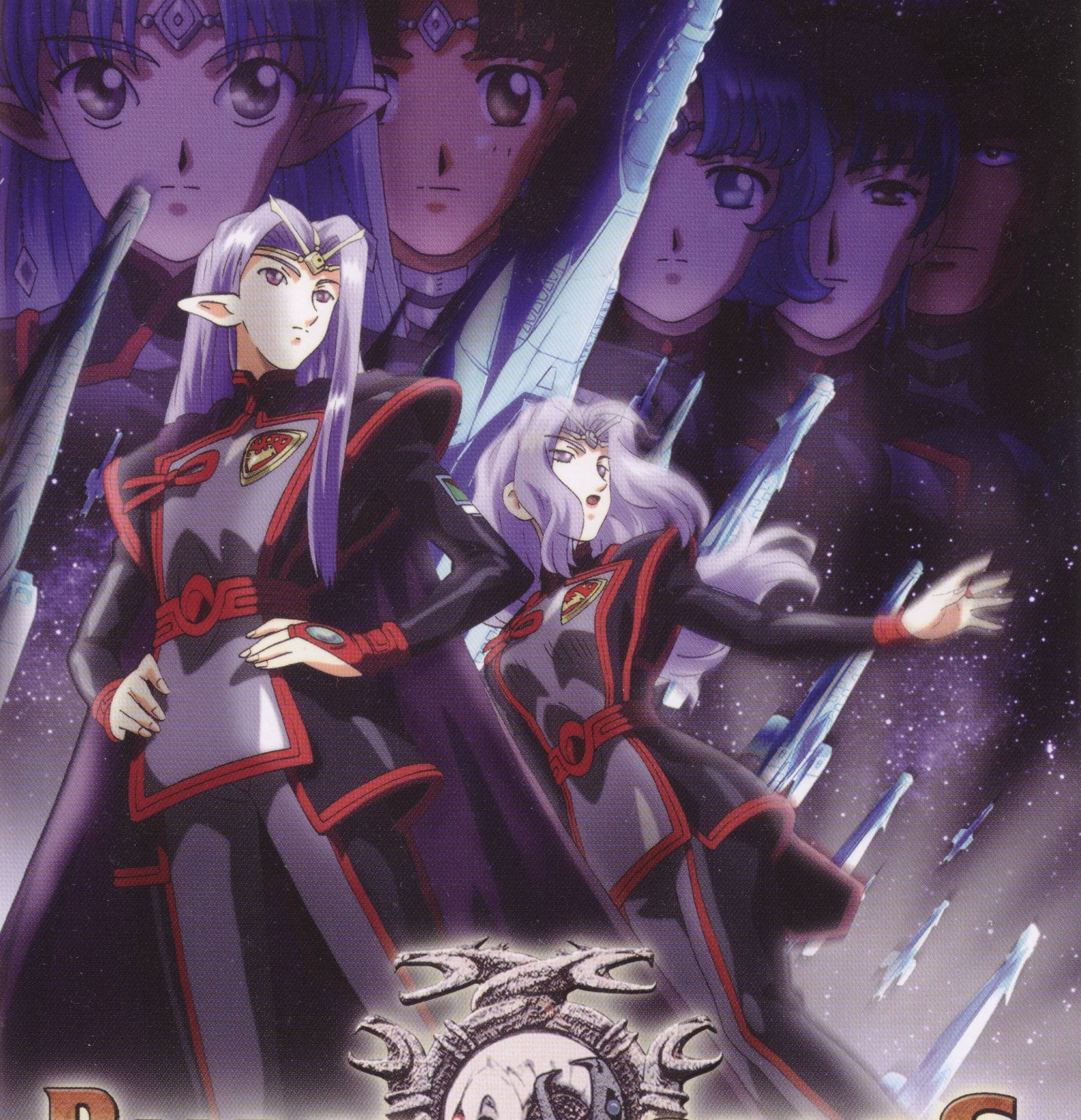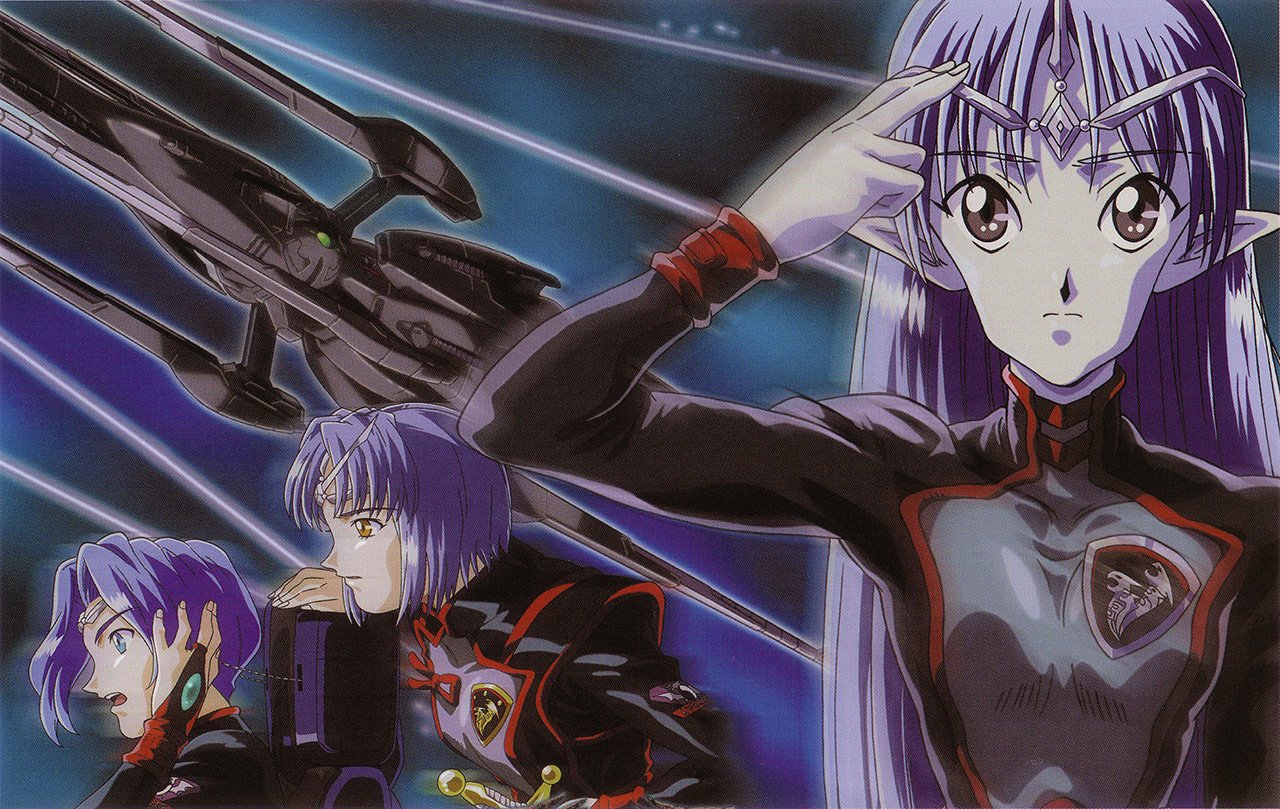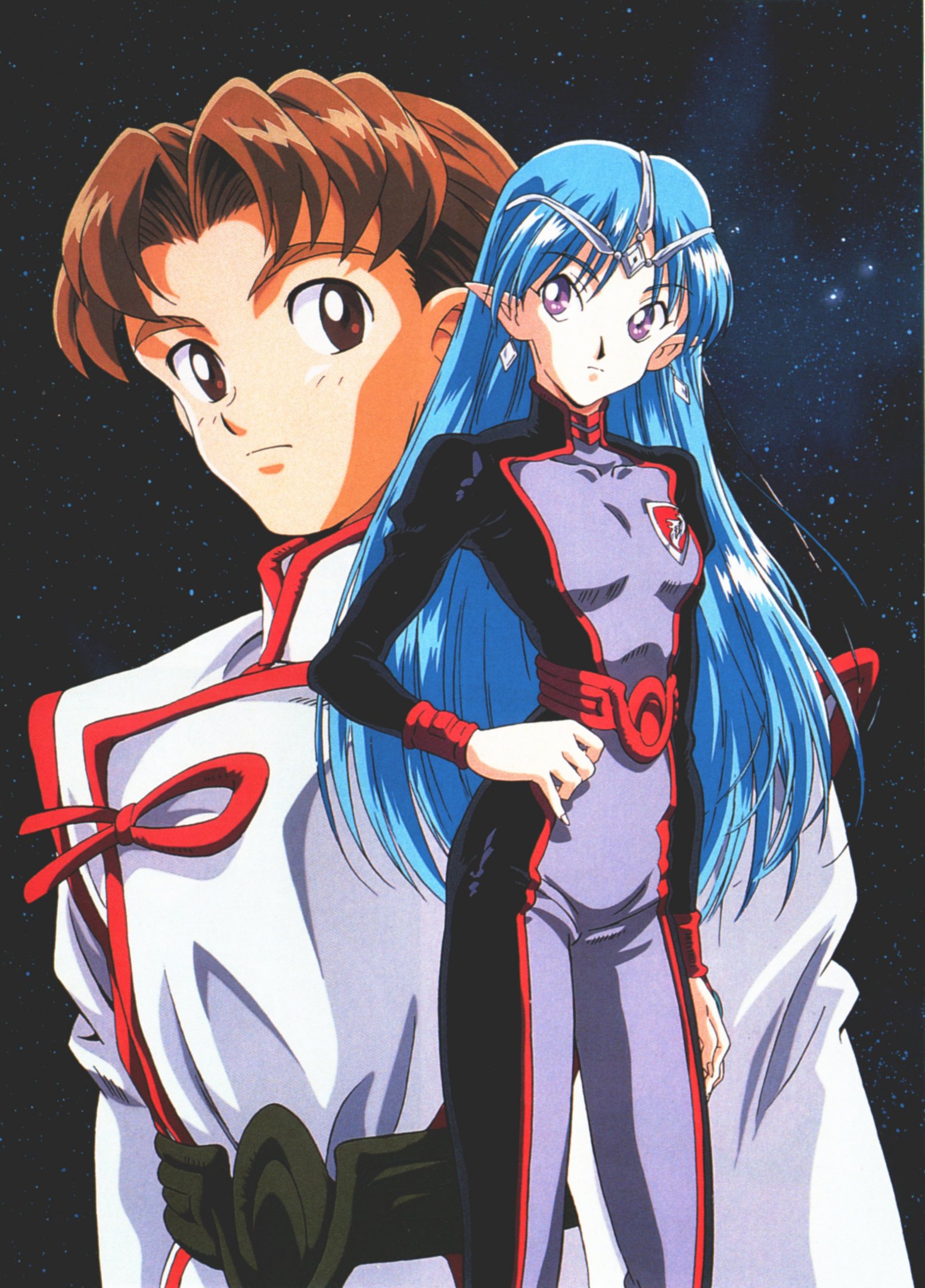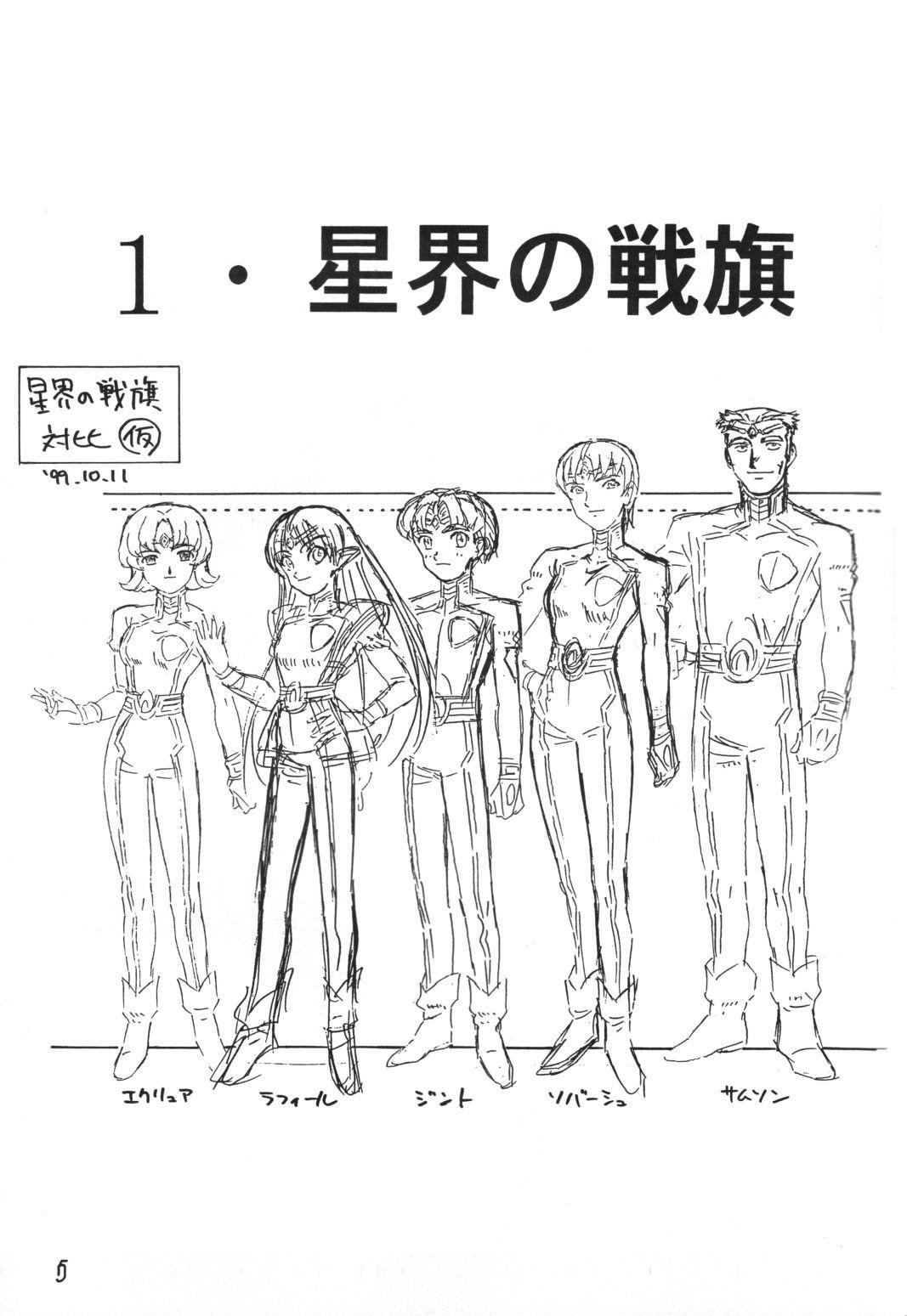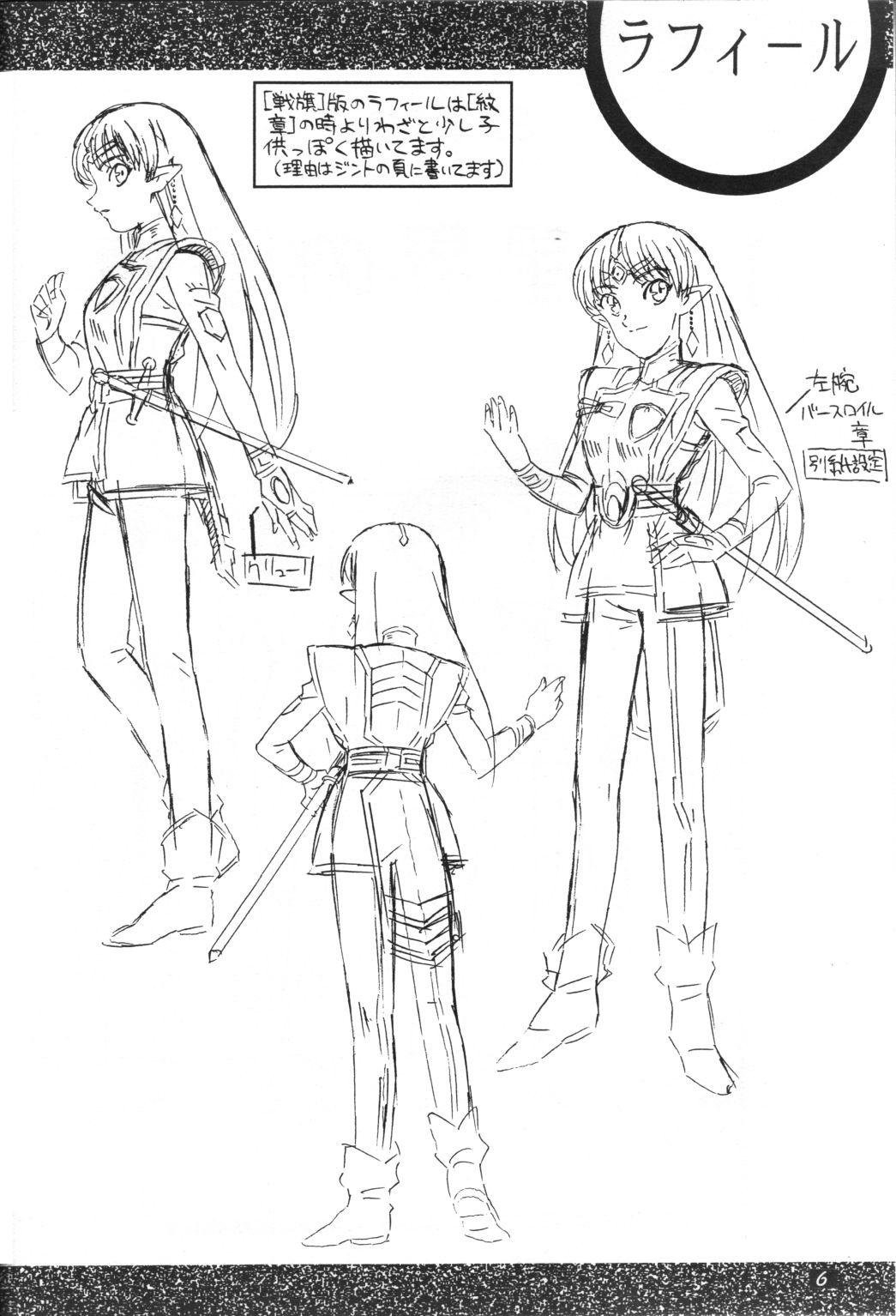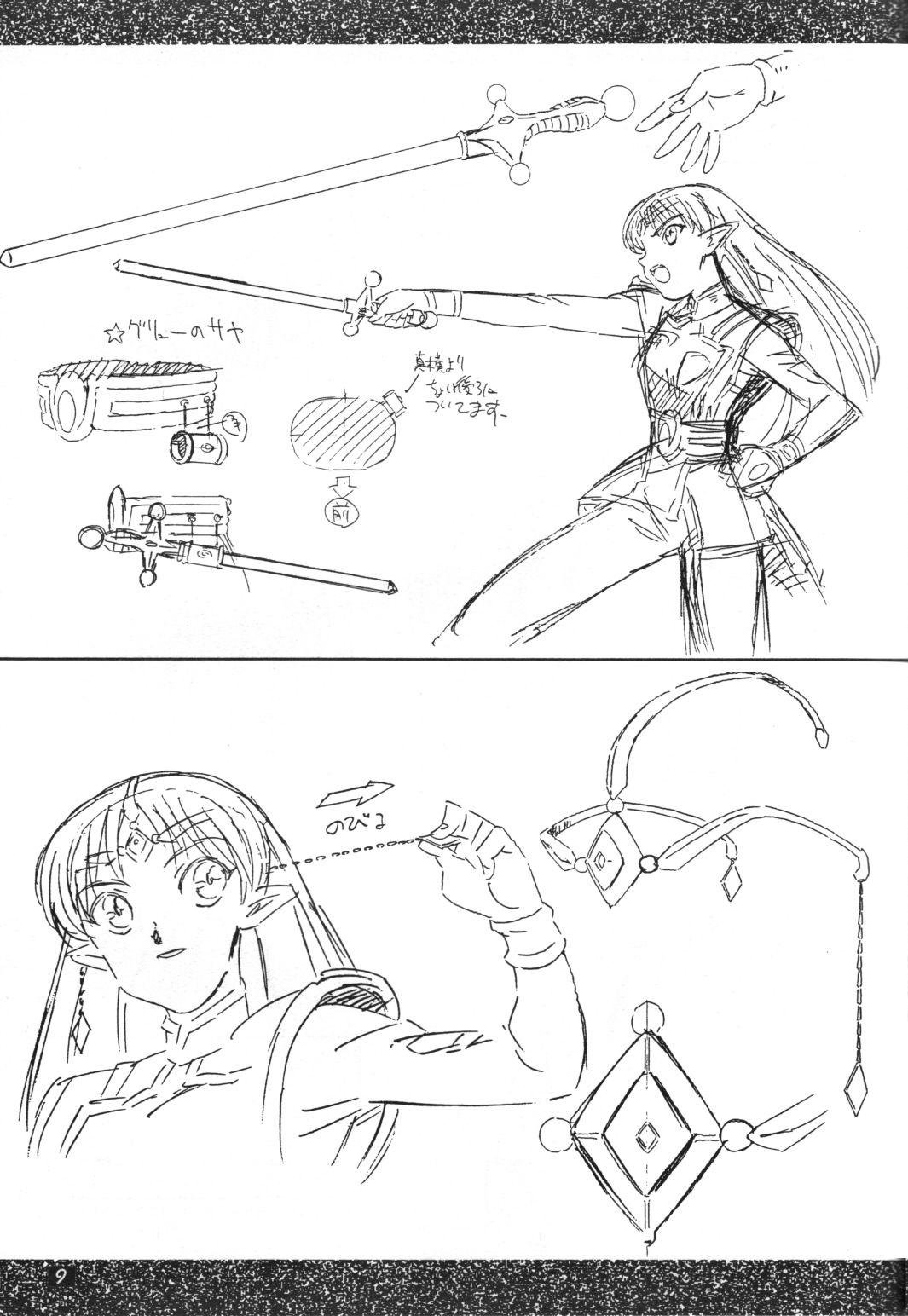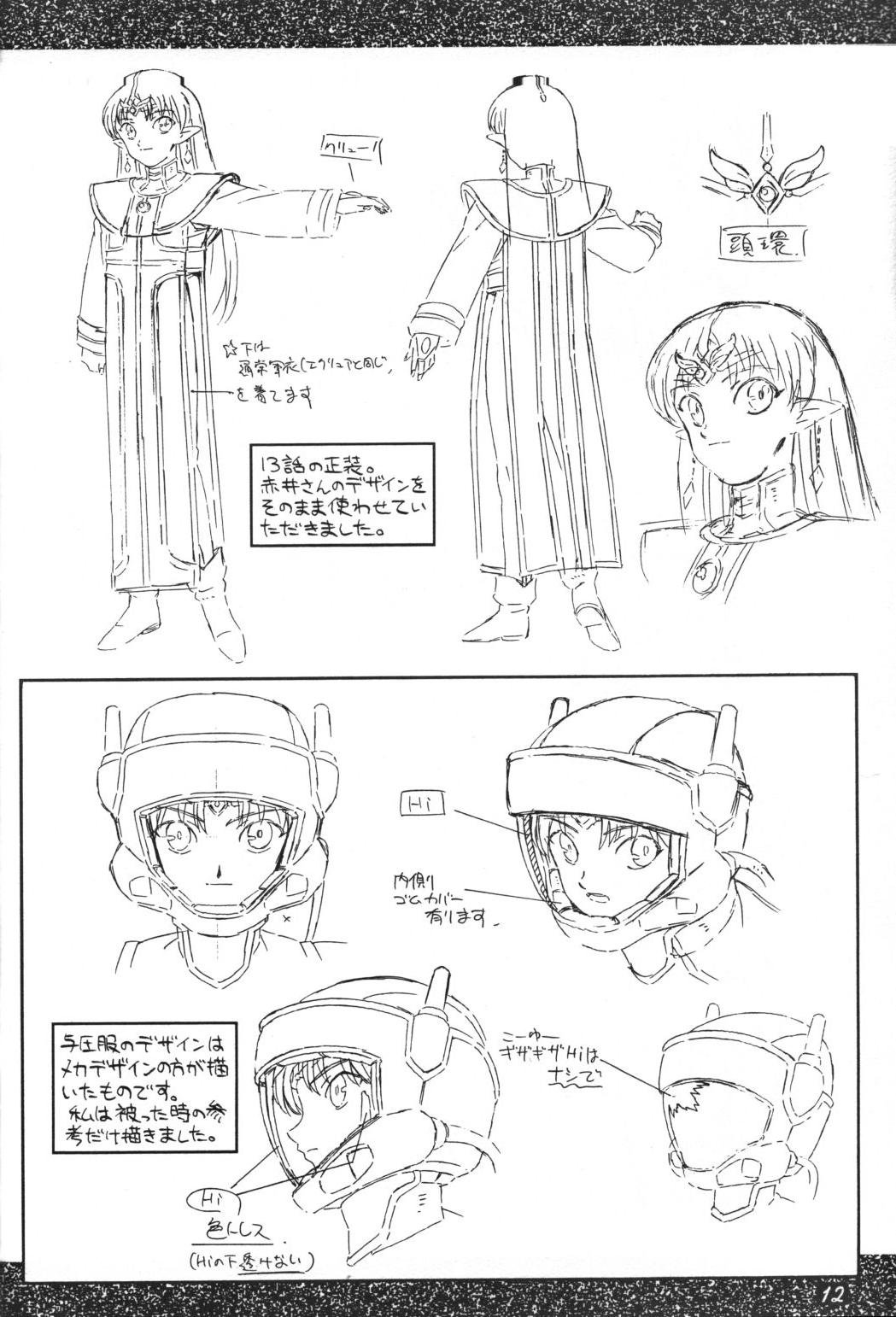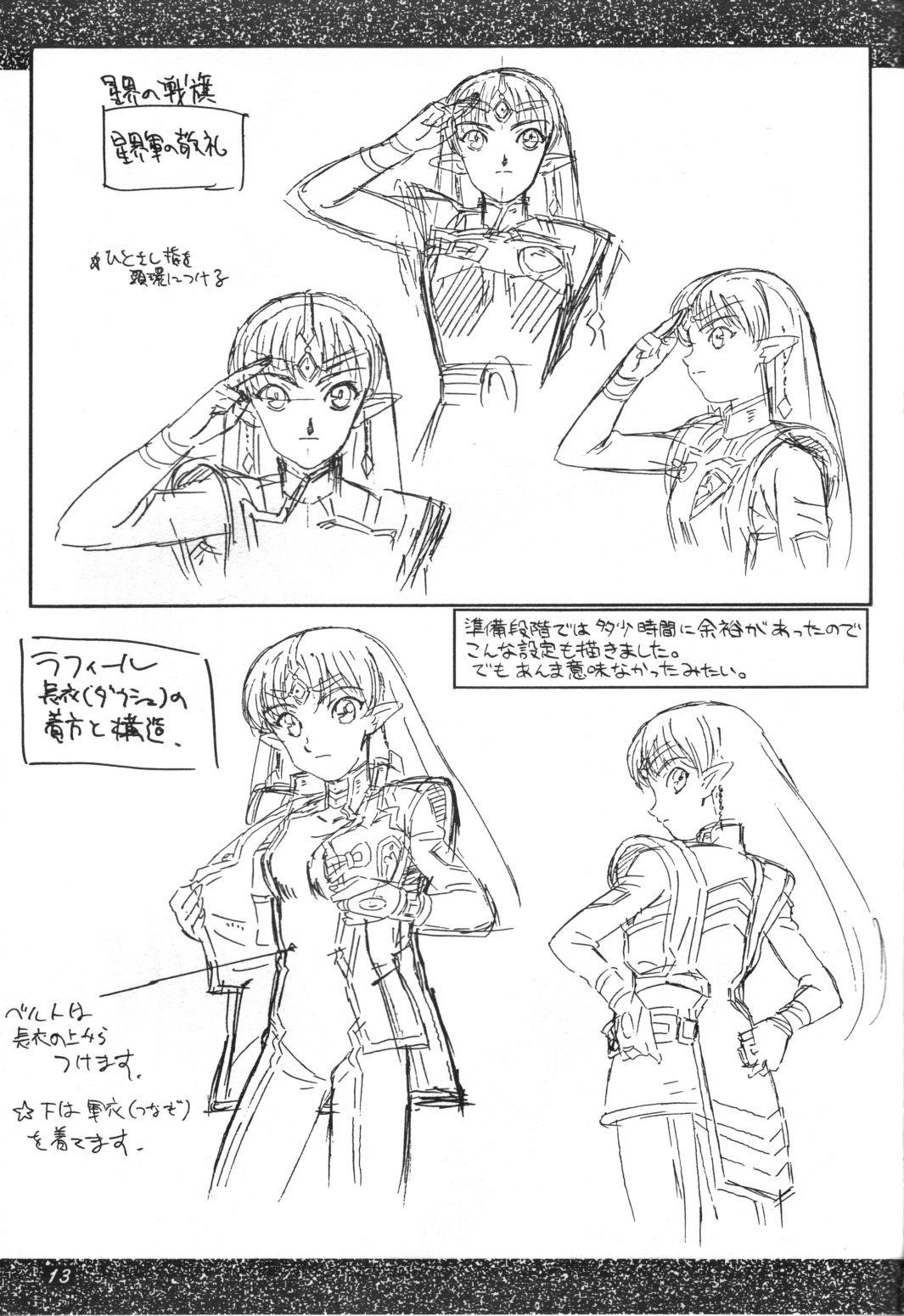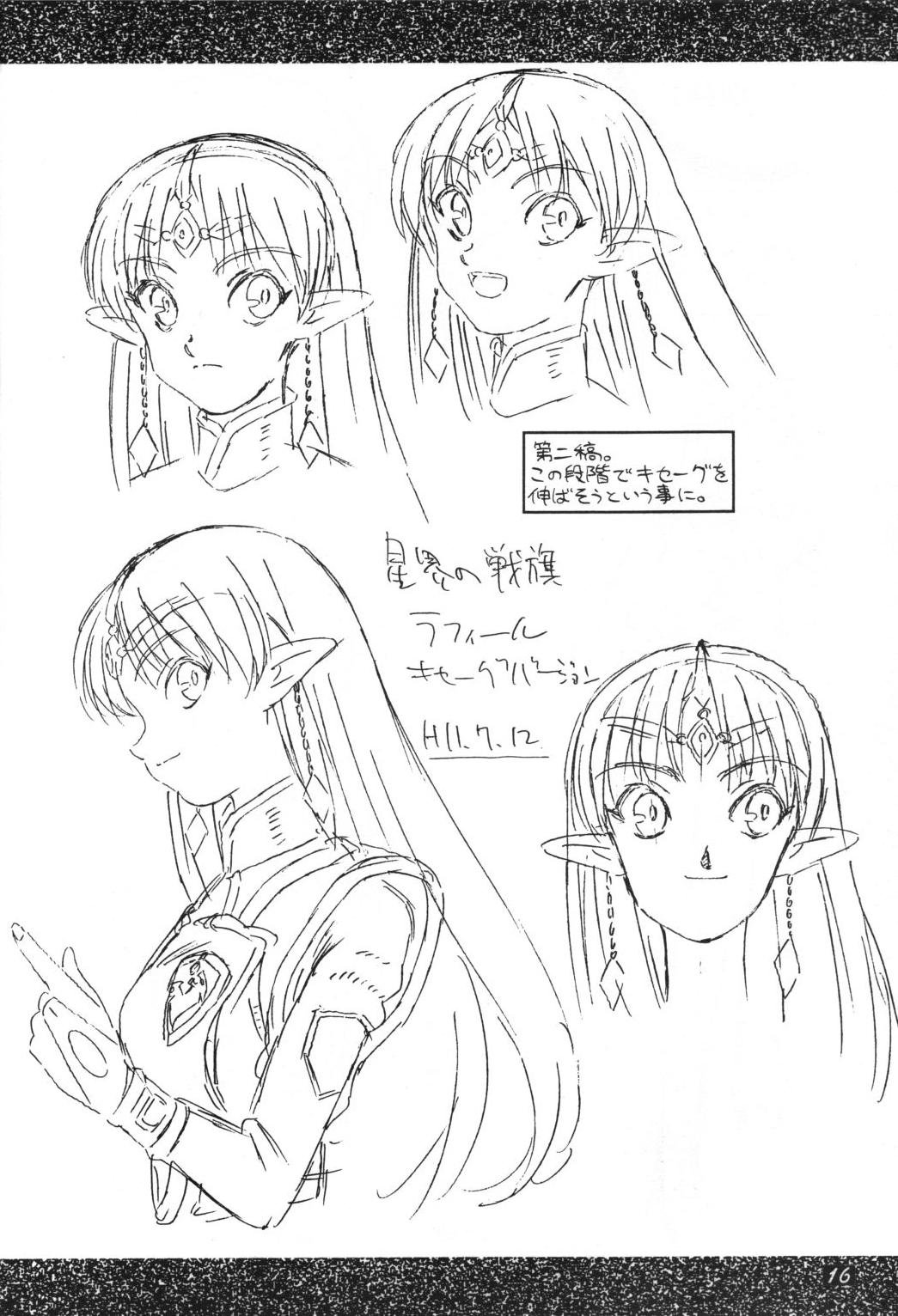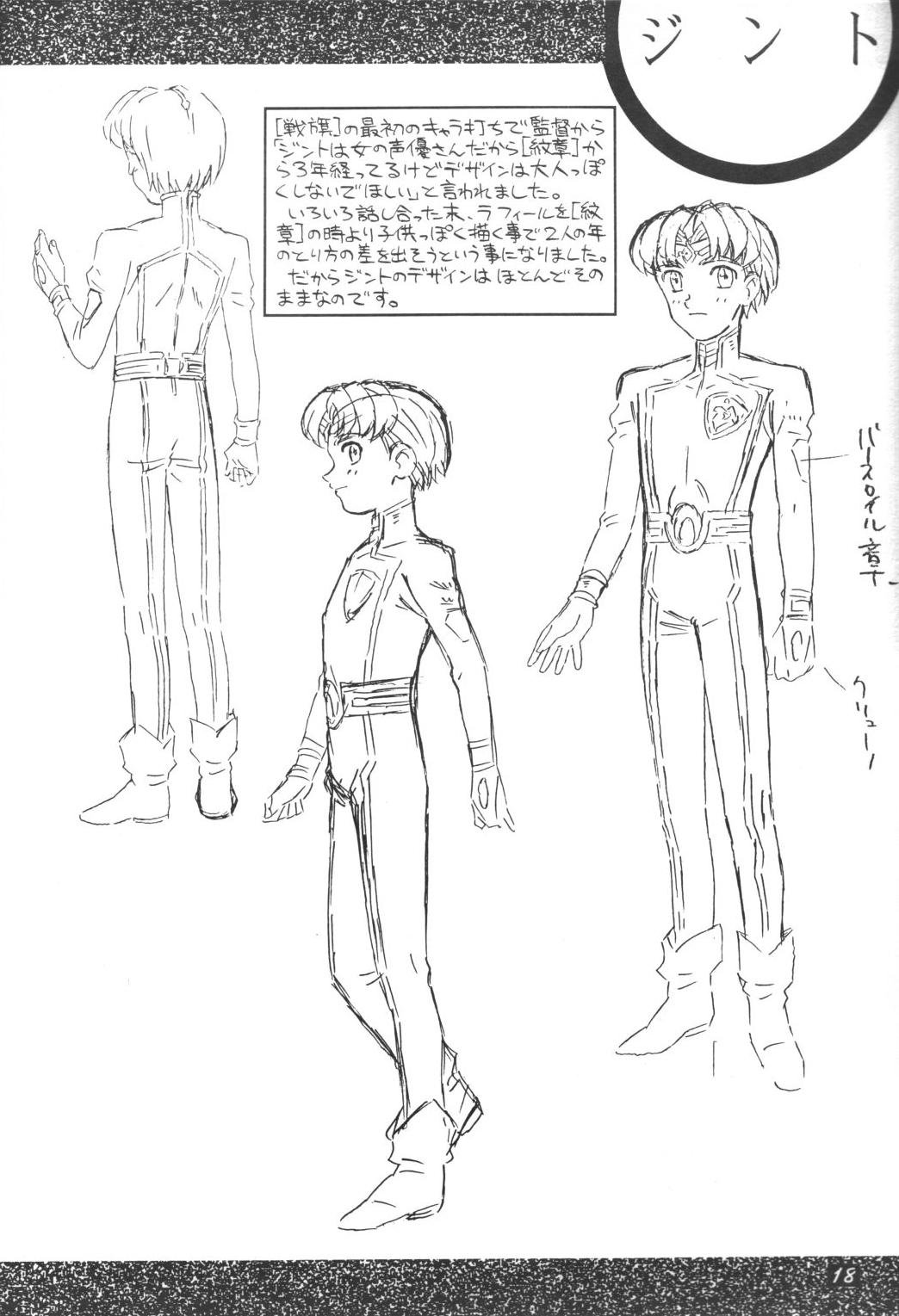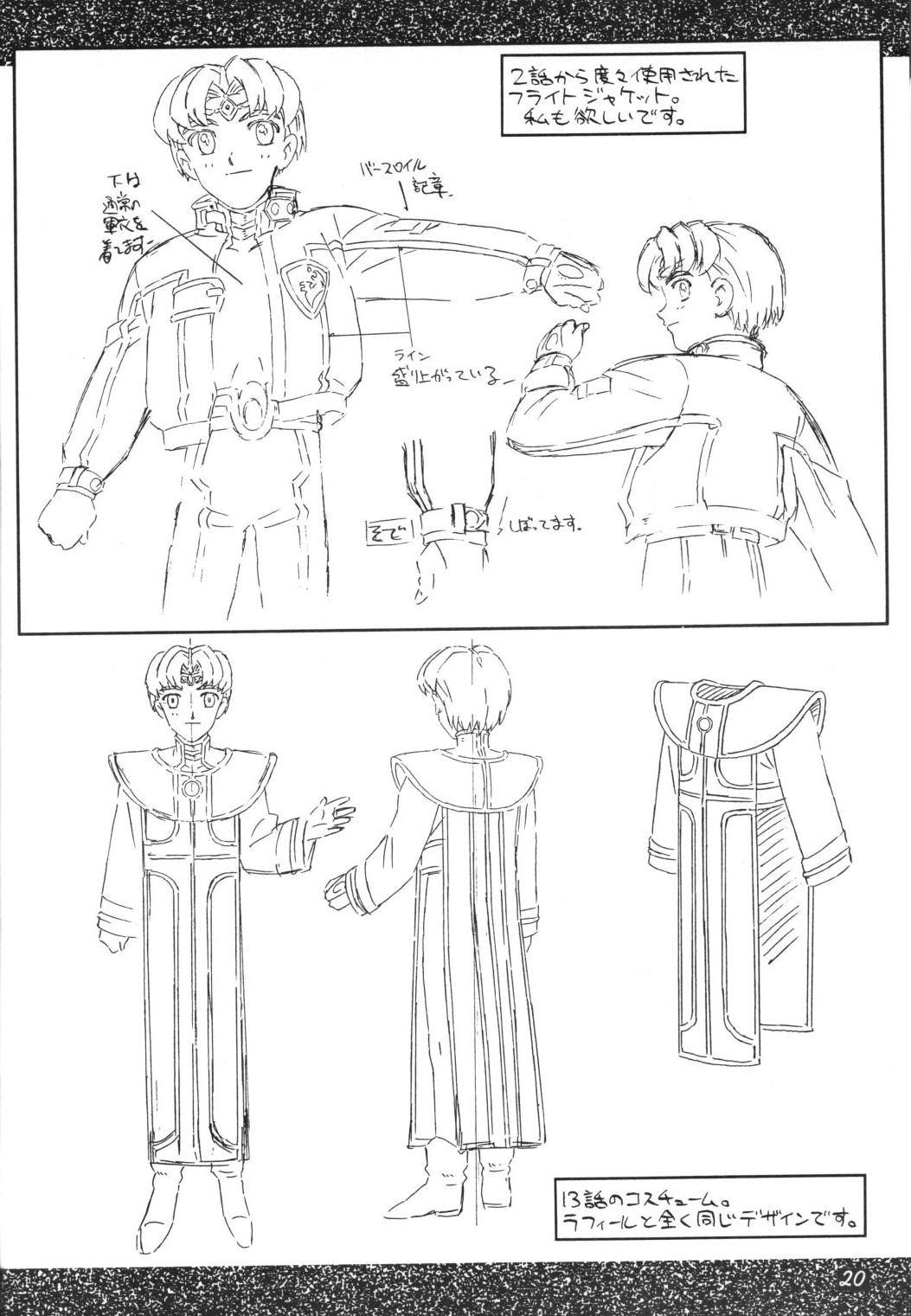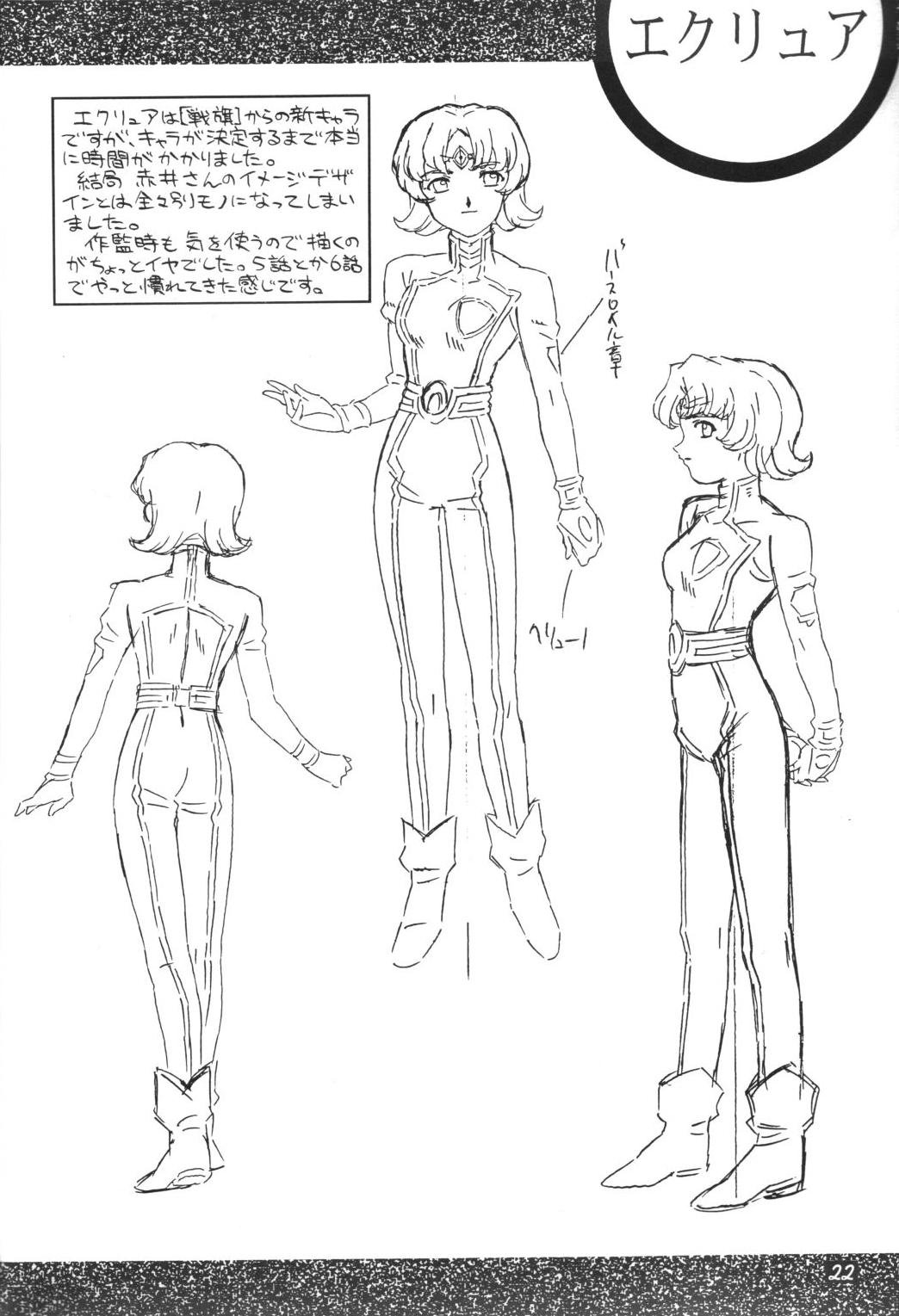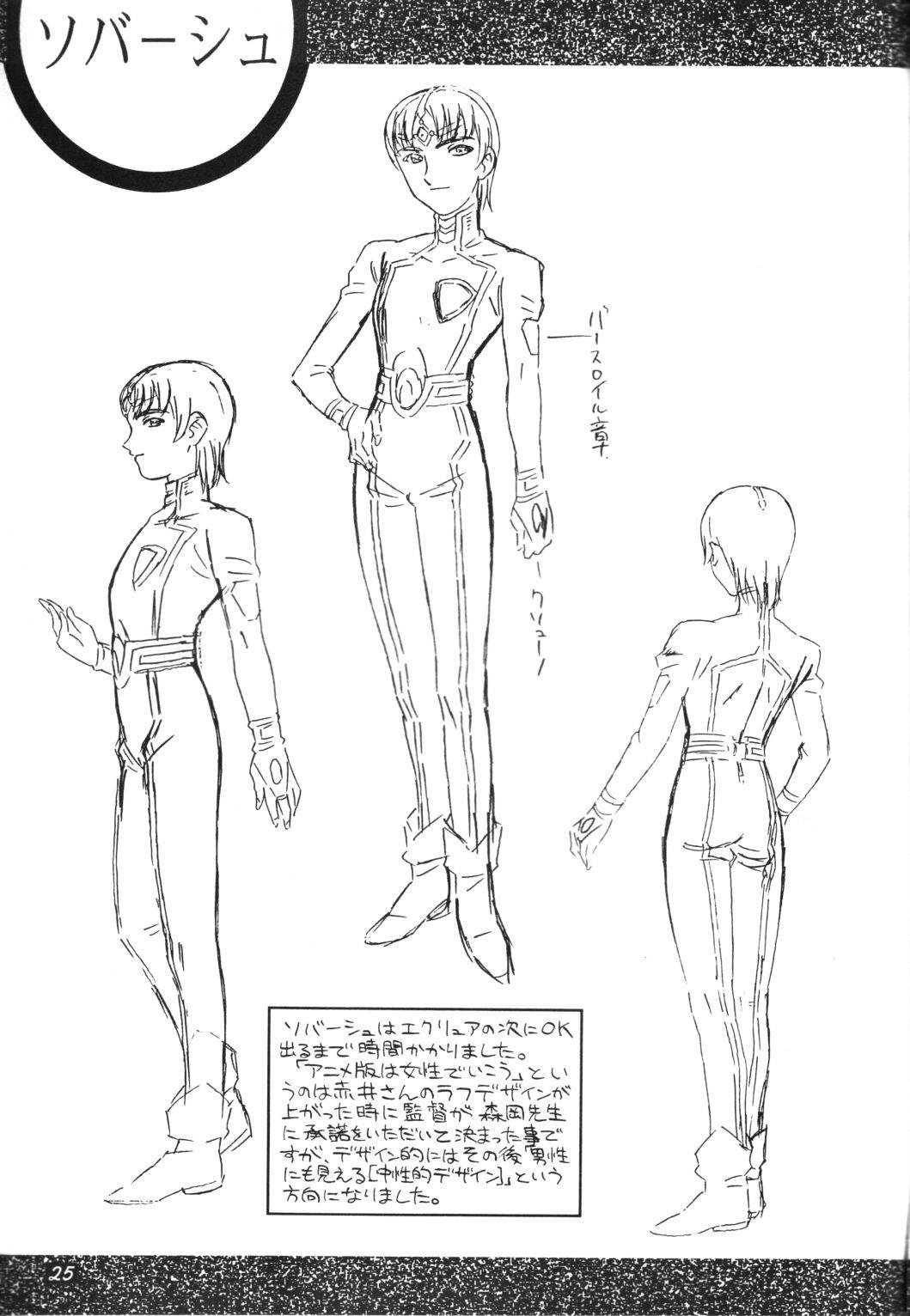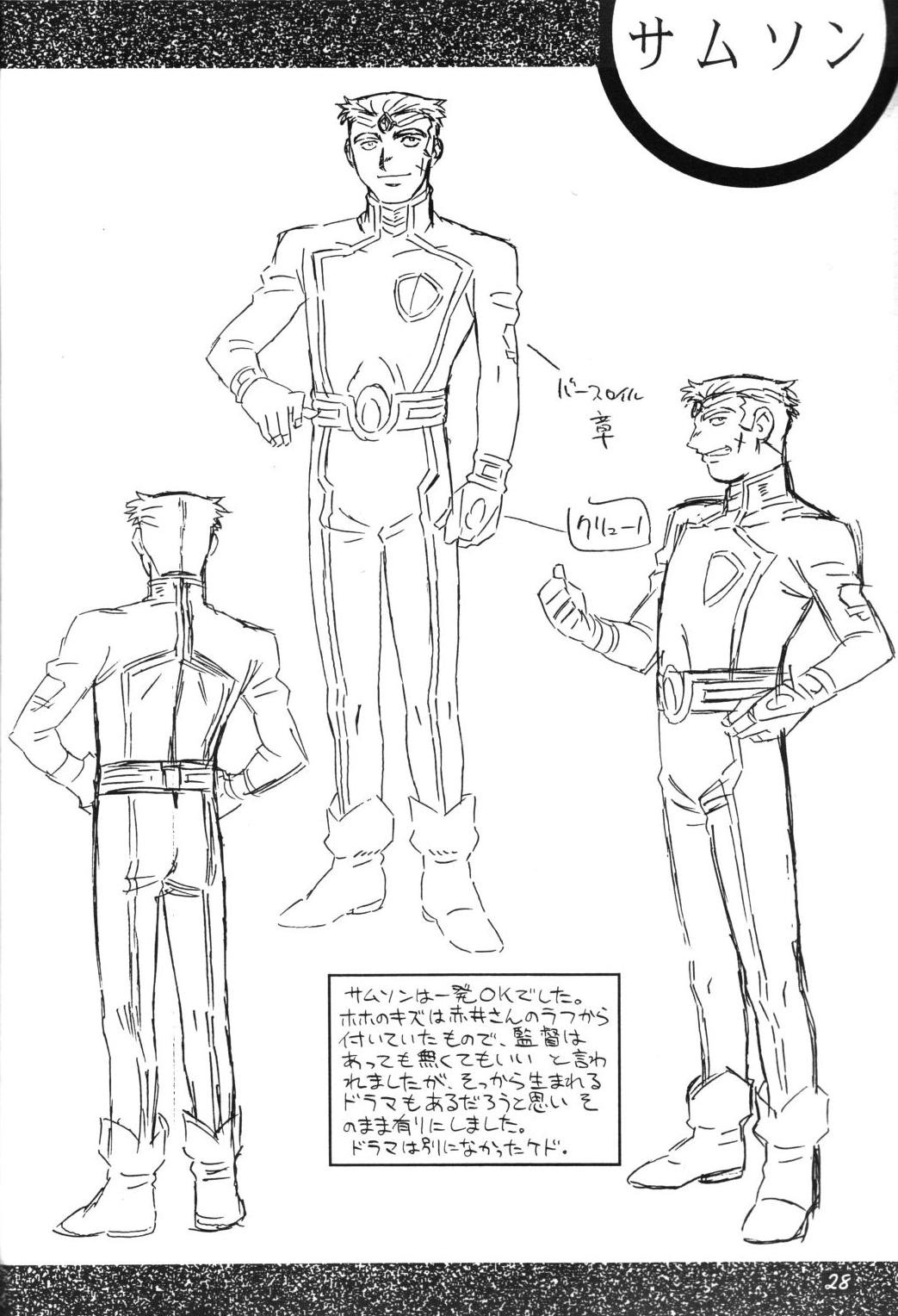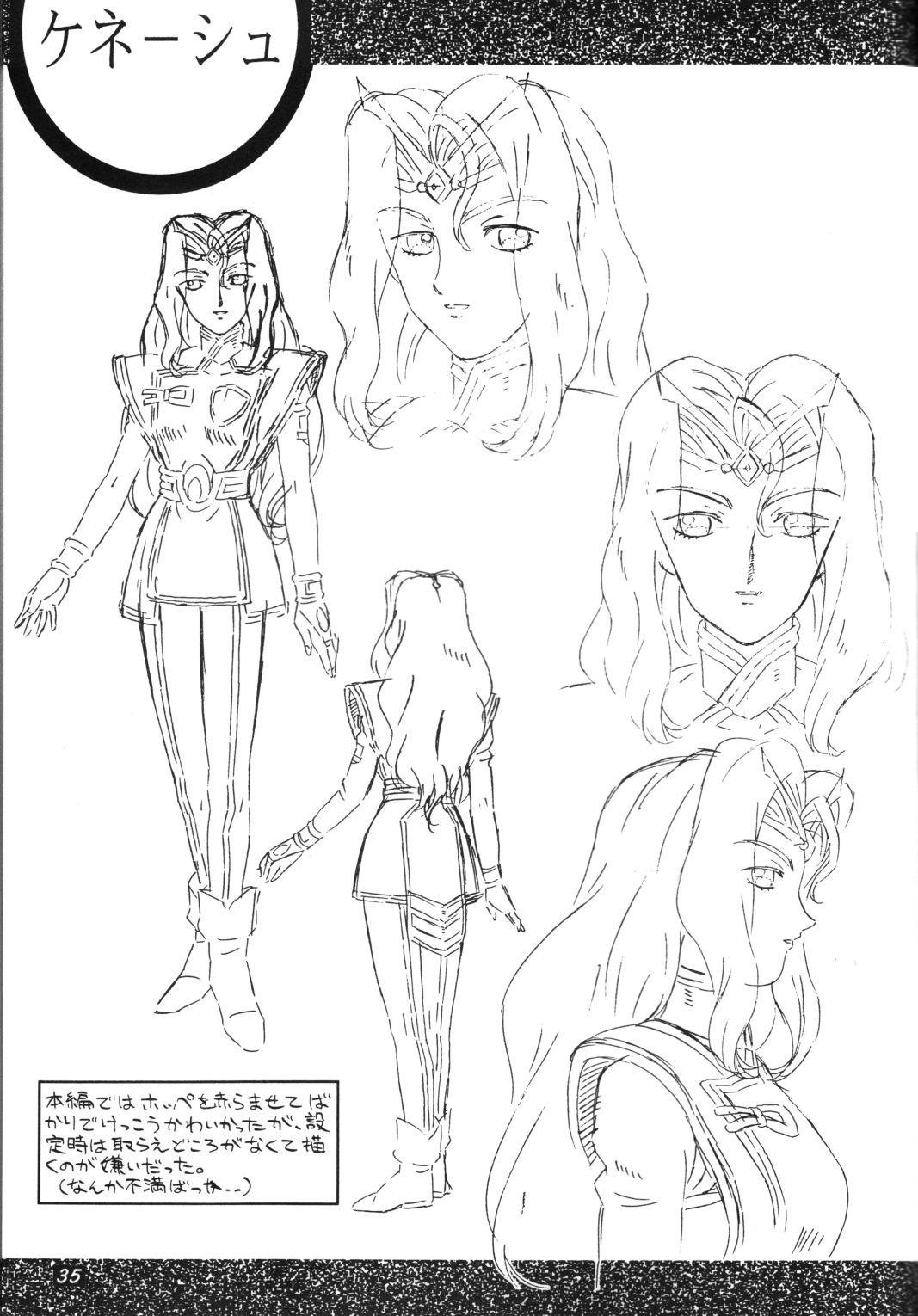-
Posts
13197 -
Joined
-
Last visited
Content Type
Profiles
Forums
Events
Gallery
Everything posted by Seto Kaiba
-

Super Macross Mecha Fun Time Discussion Thread!
Seto Kaiba replied to Valkyrie Driver's topic in Movies and TV Series
Well, not everybody... I've been doing the GM thing in my own RPG sessions, playing in others RPG sessions, and as staff on a Macross MUSH for a long time... and oh boy could I tell you stories about the kind of garbage I've seen. So many players who want a custom VF for themselves in game want the kind of swaggering, completely over-the-top invincibility that's normally found among the titular mecha in a Gundam storyline. I've often spoken about how disappointed one of my friends was when I told him bringing an accurately-statted Legioss (RT: Alpha) from Genesis Climber MOSPEADA into the Macross setting was a suicidal idea, but most of the ones I've seen have been more on the Wing Gundam Zero side of the scale. I recall a player on the Macross MUSH I was on submitted a request for a custom VF for his character which entailed his character gaining mentat abilities (yes, from Dune), performance that exceeded most 5th Gen VFs in a setting where the 4th Gen VFs were still new, and combat capabilities somewhere around the Wing Gundam Zero's level of blithe invincibility and overwhelming firepower. (Oh, and in Camille Bidan fashion he wanted to be its designer in-universe too, and keep all the specs in his mind so it could never ever be duplicated or reverse-engineered.) The other GMs and I just sort of stared at the application form for that one in quiet disgust, and resolved to bury that sucker like evidence of a dreadful crime. That would've been back before they brought up the subject of active stealth technology and how it makes the VF-19 and VF-22 more stealthy than the VF-17 even with bombs and missiles hung on their wings. Names associated with the unquiet dead are usually associated with unmanned fighters in Macross... the Ghost being the obvious one, though one of the non-official setting game series had one called the Phantom as well. The QF-5100D Goblin II kind of breaks the pattern a bit tho. We've kind of reached that point in-universe though... the YF-29 had 100 internally-carried missiles, and most Super Packs now have several hundred. Ah, the "blade below the shoulder" kind of thing? Eh, no worries... one thing I know about artists and model builders and musicians and so on is y'all are your own harshest critics. Designing a transforming mecha is HARD, even for professional artists. -

Super Macross Mecha Fun Time Discussion Thread!
Seto Kaiba replied to Valkyrie Driver's topic in Movies and TV Series
Yeah, it always sucks when a campaign gets derailed after the story really gets going. Can't say too much, since some of my players read these forums... but there are a lot of conflicting agendas in that emigrant fleet. Partly it's due to the interplay between the reform movement's push for rearmament conflicting with the establishment's desire to maintain their pacifistic stance, but there's a fair amount of outside influence as other governments see opportunities to profit from someone else's suffering. I'm not going to jump to any conclusions... but I guarantee no matter how bad you think it is, I have absolutely seen FAR worse. All in all, it actually looks OK to me. There are some obvious design concessions that had to be made as it's a kitbash, but it looks OK to me in terms of the physical model. Well, you're in good company on the concept front... Kawamori's SW-XA1 and SW-XA2 from his "VF-Experiment" series in Character Model were basically exactly that. New stealth fighters intended to complement/supplement the VF-17 since the VF-17 was mostly only good for long-range attacks in space. Name-wise, I can't pretend that I thrill to "Wraithverge" but it's definitely no worse than many fan fiction designs I've seen over the years. Hm... all told, assuming it's comparably sized compared to a VF-19 or VF-22 that's actually not far outside the realm of reason. The gunpod's basically a GU-11A and we know THAT works. Internal storage probably wouldn't work out with all the other stuff you're putting in there but otherwise... The micro-missile count ain't bad either. The spec from the VF-19F/S on the toy packaging was for 48 micro-missiles in the legs, though that was later taken back down to 24. The VF-31's got 36 in a 2x3x6 configuration. The YF-29's got 100. The beam gun specs are all borrowed from existing VFs (e.g. the VF-17) so no issue there. The arm bayonets might be a bit much, and there's a lot being stored in the legs, but otherwise it all looks more or less OK. Macross the Ride had a VF with an experimental barrier like that, though it was based on Protodeviln biotech. -

Super Macross Mecha Fun Time Discussion Thread!
Seto Kaiba replied to Valkyrie Driver's topic in Movies and TV Series
Because it takes many years for a military to fully transition from using an older model of fighter to a newer one. Even in 2067, the New UN Government member governments that were early adopters had only recently begun the phased replacement process that would see the 4th Gen (or older?) VFs their New UN Forces were flying gradually retired and replaced with 5th Generation VFs... a process that would easily take a decade or more. Other New UN Government members were still in the process of evaluating prospective 5th Generation main VF candidates and wouldn't have a workable design ready for introduction for years. The Frontier Government's New UN Forces were still in the process of retiring and decommissioning their VF-11's in 2058, ten years after the introduction of the VF-171 and during the evaluation of their 5th Gen replacement for the VF-171. Earth was only just starting the process of adopting the VF-24 in 2059 when the Vajra situation blew up, and both the Macross Frontier emigrant fleet and the Brisingr Alliance were 2-3 years from the start of production on their respective 5th Gen main VFs at the start of their respective series in 2059 and 2067. Despite a commanding lead, Earth likely won't be finished transitioning its forces to the VF-24 until 2069-2070. That'd be the point where they MIGHT loosen restrictions on the VF-19. Many other governments likely won't finish transitioning to their new fighters until the late 2070s or beyond. -

Super Macross Mecha Fun Time Discussion Thread!
Seto Kaiba replied to Valkyrie Driver's topic in Movies and TV Series
Generally speaking, what makes information from an anime or hobby periodical like Newtype, Great Mechanics, Dengeki Hobby, B-Club, etc. authoritative is who that information came from rather than the publication itself. A lot of these magazines run promotional pieces that are interviews with, or written/co-written by staff from the anime they're covering. A lot of the Macross articles about mecha are written or co-written by the franchise's mechanical setting coordinator and original tech manual author Masahiro Chiba. Kawamori's interviews on various shows are often goldmines of details about the show's non-mechanical setting. Of course, Ken'ichi Yatagai's big feature in B-Club was THE source of timeline info for Macross II: Lovers Again, etc. What sets the Variable Fighter Master File books apart is that, despite being nominally supervised by Kawamori and having some contributions from Chiba, each volume has a disclaimer on the book's credits page (like the one below) that specifically states that the book's contents are not official Macross setting material. This one is from Variable Fighter Master File: VF-1 Valkyrie Vol.1. -

Uniforms in Crest of the Stars / Seikai no Monshou
Seto Kaiba replied to roboemo's topic in Anime or Science Fiction
Just gonna say... not only can I not find any artbooks with art of the opposing side in Crest of the Stars or Banner of the Stars, I can't even remember what they looked like and I've seen the bloody show. -

Super Macross Mecha Fun Time Discussion Thread!
Seto Kaiba replied to Valkyrie Driver's topic in Movies and TV Series
Yup... our original format was playing at a delayed rate on a phpBB bulletin board. In fact, that's what the domain that now hosts the Macross Mecha Manual was originally created for. We moved it to Skype, and later to Discord, because we were able to actually make our scheduled sync up for a while. Unfortunately, the worst offender in terms of availability happens to be the GM thanks to the department I oversee at my day job being critically understaffed in the middle of launch season with no ability to interview candidates to fill all the vacancies thanks to the pandemic. It probably has something to do with the uncomfortable (and probably late) realization that they'd written themselves into a corner after they arranged Isamu's cameo appearance. His appearance raises a TON of questions if you look into the setting even a little bit. Isamu was, last we heard from him, a Major in the New UN Spacy Reserve and still living/working somewhere in the New UN Gov't core systems (Earth/Eden) given that he was tapped to demonstrate the YF-24 Evolution to the New UN Forces in 2057. Why, just two years later, is Isamu now flying for SMS tens of thousands of light years away? When Macross Frontier debuted, it was established that there were severe export restrictions on the VF-19 Excalibur because of what Isamu did that combined with the VF-19's high operating costs and other factors meant that the VF-19 was never widely adopted and its manufacture and operation are heavily restricted to the point that the emigrant governments can only manufacture them in small numbers at reduced capability for elite troops. How then, did private citizen and SMS employee Isamu Dyson obtain a VF that is normally only available to the most elite New UN Forces Special Forces squadrons? At the time (2059) the second Macross Frontier movie is set, the VF-19's standard production variants hadn't looked like the YF-19 for almost fifteen years. Why does Isamu's shiny new VF-19 look like a twenty year old variant? Moreover, why doesn't his shiny new VF-19 look like the variant of VF-19 it's actually based on? Most importantly, Isamu is a private citizen in 2059 who somehow possesses an apparently-unique VF-19. How in the nine hells did he pull THAT one off? Who paid for that? The VF-19 is supposed to be a fighter so expensive most emigrant fleets balked at the price tag. Where did he get that kind of cash? Casual Frontier viewers who haven't seen the rest of Macross aren't going to know that brief scene is even a cameo, never mind who it was and what the significance is. The die-hard fans are the ones who read the articles in Newtype and Great Mechanics and Macross Chronicle that explained why the VF-19 wasn't a thing in 2059. They're also the ones who were going to recognize that cameo for what it was and could be expected to know the significance of it because they've seen Macross Plus. Those fans are going to ask those questions, because they're very quickly going to notice something doesn't tally up... so they needed to come up with an explanation. Enough to keep Isamu from getting dishonorably discharged, apparently... -

Super Macross Mecha Fun Time Discussion Thread!
Seto Kaiba replied to Valkyrie Driver's topic in Movies and TV Series
Oh, undoubtedly... the VF-11 Thunderbolt did just fine against the Zentradi when the odds weren't stacked too heavily against it. The VF-19 was a massive step up in performance compared to the VF-11 it was intended to replace. That, of course, was a big part of the problem. Shinsei Industry built a VF that almost nobody could actually fly and (if you believe Master File) seems to have spent the next twenty or so trying to rework it into something that didn't kill its pilot and/or destroy itself before the enemy even got the chance. Well, the cheaper ones anyway... the Queadluun-Rau battle suits do have a nasty habit of shredding VF-1's in bulk. Yeah, gaming is a lot easier when you're a kid and you don't have all those responsibilities... long gone are the days when I could organize weekly sessions. I'd be interested to hear about your custom-designed VF. Yeah, I've tried to flesh it out pretty extensively so the players won't be on rails... with three different emigrant governments poking their respective oars in, plenty of political intrigue, and some shifty corporations, I think I've created enough latitude that this game could probably run for at least a year's worth of weekly sessions. When we left off, there were seven distinct factions squabbling for control of the fleet's government and its decommissioned military assets. Nostalgia is a hell of an equalizer. Yeah, Isamu went to some pretty extreme lengths to convert the VF-19EF - a 2nd Mass Production type VF-19 like the VF-19F and VF-19S - into something that outwardly resembles and performs like the YF-19-2 or an early 1st Mass Production type VF-19 like the VF-19A. I like to think Dr. Neumann spends several minutes breathing heavily into a paper bag whenever Isamu's name is mentioned, and that he probably keeps Isamu's file photo on a dart board in his office. Isamu tortured the crap out of him during Project Super Nova. -

What Current Anime Are You Watching Version v4.0
Seto Kaiba replied to wolfx's topic in Anime or Science Fiction
It's not anything revolutionary, but it's definitely a lighthearted breath of fresh air in a world otherwise inundated with bad news. -

Super Macross Mecha Fun Time Discussion Thread!
Seto Kaiba replied to Valkyrie Driver's topic in Movies and TV Series
My read on it is that it's basically his version of a classic muscle car as he heads into an early midlife crisis. It's not bleeding edge performance, but for him something like an Inertia Store Converter probably counts as cheating. -

Super Macross Mecha Fun Time Discussion Thread!
Seto Kaiba replied to Valkyrie Driver's topic in Movies and TV Series
I like to think General Gomez, the man who was dead-set on killing the Project Super Nova contest in favor of the Ghost, likely had to be forcibly restrained during Isamu's debriefing. It's official. The "space trucker" bit was revealed at the aforementioned official Macross concert, and the thing about him sinking his life savings into the VF-19EF/A "Isamu Special" is taken from the Mechanic Sheet for the VF-19EF/A "Isamu Special" in the official Macross encyclopedia Macross Chronicle. Ouch... my group is similarly on hiatus, due to furloughs from our various offices dumping more work on us. We were in the middle of a campaign that's playing with the aftermath of the rather weak ending of Macross the Musiculture. -

Super Macross Mecha Fun Time Discussion Thread!
Seto Kaiba replied to Valkyrie Driver's topic in Movies and TV Series
Y'know, I don't know... I don't recall them ever offering an explanation for what the military said to explain away the presence of the YF-19 and YF-21. -

What Current Anime Are You Watching Version v4.0
Seto Kaiba replied to wolfx's topic in Anime or Science Fiction
Reincarnated into an Otome Game as a Villainess With Only Destruction Flags confirmed for a second season. https://www.crunchyroll.com/anime-news/2020/06/20-1/my-next-life-as-a-villainess-all-routes-lead-to-doom-continues-dodging-death-flags-in-2021 -

Uniforms in Crest of the Stars / Seikai no Monshou
Seto Kaiba replied to roboemo's topic in Anime or Science Fiction
Unfortunately, that's all I was able to find... most of the character designer's published artbooks are just collections of storyboards from Banner of the Stars. -

Uniforms in Crest of the Stars / Seikai no Monshou
Seto Kaiba replied to roboemo's topic in Anime or Science Fiction
-

Uniforms in Crest of the Stars / Seikai no Monshou
Seto Kaiba replied to roboemo's topic in Anime or Science Fiction
Sorry, something about how I pasted the images into the post didn't go over well with the forums. I'll re-upload them as attachments. -

Uniforms in Crest of the Stars / Seikai no Monshou
Seto Kaiba replied to roboemo's topic in Anime or Science Fiction
Unfortunately, most of his published Design Works volumes are just storyboard collections. Here's some reasonable color reference I turned up in a collection of DVD booklet scans: -

Uniforms in Crest of the Stars / Seikai no Monshou
Seto Kaiba replied to roboemo's topic in Anime or Science Fiction
Wow... did NOT expect this request for art reference to be as hard to fulfill as it turned out to be. The only content I was able to turn up is from the sequel, Banner of the Stars. The following is from character designer Keisuke Watabe's Design Works Vol.4: -

Super Macross Mecha Fun Time Discussion Thread!
Seto Kaiba replied to Valkyrie Driver's topic in Movies and TV Series
If you stop and think about what the consequences for Isamu's offenses likely was, he's basically Macross's Kou Uraki... saved from the firing squad by the government covering up the circumstances of the incident he played such a pivotal role in. -

What Current Anime Are You Watching Version v4.0
Seto Kaiba replied to wolfx's topic in Anime or Science Fiction
This season's one cour shows are drawing to a close this week... and I have to admit, I won't miss most of them. The 8th Son? That Can't Be Right! deserves special acknowledgement. Not just because it's the most blatantly half-assed and lazily-written Isekai story I've ever seen... but also because its final episode seems to give even fewer f*cks about the story than the audience does. The climactic confrontation between the protagonist and his evil oldest brother - an event that the entirely of the last two episodes was spent building up to - lasts a minute and ten seconds and consists of one thrown punch followed by immediate obliteration by holy magic. It's over so fast there's literally 2/3 of the episode left when it's done. If this were One Punch Man they'd make a joke out of how short the fight was, but this is played completely seriously and treated like a major accomplishment and the remainder of the episode is spent watching the King's court argue over his reward for it. The ending reveals his grand plan for all that land he just inherited by killing the previous heir is to... make a miso and soy sauce factory. If I didn't know better, I'd swear I had just been trolled. I am hoping for better from Reincarnated into an Otome Game as a Villainess With Only Destruction Flags when its final episode hits Crunchyroll tomorrow. -

Super Macross Mecha Fun Time Discussion Thread!
Seto Kaiba replied to Valkyrie Driver's topic in Movies and TV Series
Oh, it cost him a lot more than that... he sank his entire life savings into that VF-19EF/A. Assuming, of course, that Spaz Platoon can keep its undiagnosed ADHD under control long enough to actually deal with its assigned objectives... One has to wonder... Isamu isn't exactly a stable individual by any stretch of the imagination. He's a meatheaded adrenaline junkie with poor impulse control and little-to-no respect for authority. That's why every part of his career in the New UN Forces was punctuated with disciplinary hearings, administrative punishments, and multiple punitive reassignments. Even a major achievement like having defeated the out-of-control AI Sharon Apple after it seized control of Earth's defenses was tainted by the fact that he stole a heavily armed top secret VF and a fold booster test article, destroyed part of a hangar complex at New Edwards Test Flight Center, incurred some pretty hefty expenses for the Eden NUNS chasing him in his stolen VF and trying to shoot him down, attacked and destroyed part of Earth's orbital defense network, and caused all kinds of property damage on Earth beforehand. He took his retirement from the New UN Forces to avoid being pushed into an administrative position where he'd have to behave like a responsible adult, blew his life savings on a VF after attempting to buy a banned-for-export VF one part at a time in an illegal transaction, and took a job as a space trucker with Bilra Transport. If Myung is still with him, she's probably aging at ten times the rate he is from the stress of dealing with him. If they were together for any length of time, my bet is she dumped him or divorced him after he nearly got arrested for trying to buy VF-19 parts under the table and blew his entire savings on a VF before running off to live as a space trucker in the sticks. -

Super Macross Mecha Fun Time Discussion Thread!
Seto Kaiba replied to Valkyrie Driver's topic in Movies and TV Series
That should have landed Isamu in prison, had Dr. Jan Neumann not covered for him. -

Super Macross Mecha Fun Time Discussion Thread!
Seto Kaiba replied to Valkyrie Driver's topic in Movies and TV Series
As I hinted at in my previous post, nomenclature is a bit of a sticky wicket when it comes to the VF-19 that Isamu flies in Macross Frontier: Sayonara no Tsubasa... and I'm going to try to put this in approximate chronological order by publication: January 2011 The light novel Macross the Ride starts serialization in Dengeki Hobby magazine, and its first chapter "Deep Space Warbird" establishes that the branch of SMS operating in the Macross Frontier emigrant fleet had several platoons equipped with a locally-developed VF-19 "monkey model" variant designated "VF-19EF Caliburn". The VF-19EF Caliburn is a 2nd Mass Production type VF-19 modified for all-regime operation, and to a limited extent is used for data collection for the YF-25 program. 26 February 2011 The movie Macross Frontier: Sayonara no Tsubasa debuts in theaters, incl. a brief cameo scene featuring Isamu Dyson flying an aircraft that appears to be a 1st Mass Production type VF-19 in colors identical to his infamous YF-19-2 from Macross Plus. 31 March 2011 Ukyo Kodachi's novelization of Macross Frontier: Sayonara no Tsubasa is released. The text identifies Isamu's VF-19 as the "VF-19ADVANCE Excalibur Advance". 16 April 2011 The Official Complete Book: Theatrical Version Macross F: Sayonara no Tsubasa is released. Isamu's VF-19 is mentioned only in passing, and referred to only as a "VF-19 SMS Ver." in the text. 13 May 2014 Issue 69 (nice) of Macross Chronicle's revised edition is published, including a Mechanic Sheet for Isamu's VF-19 which refers to it as the "VF-19EF/A Isamu Special" and specifically links it to the monkey model VF-19EF Caliburn from Macross the Ride. June 2015 Bandai releases the DX Chogokin toy for Isamu's VF-19. The packaging uses the movie novelization's designation "VF-19ADVANCE". March 2017 Hasegawa releases a 1/72 scale kit of Isamu's VF-19. The packaging uses the Macross Chronicle designation "VF-19EF/A Isamu Special". 17 March 2017 SoftBank releases Variable Fighter Master File: VF-31 Siegfried, which includes the offending statement that refers to the "VF-19 Advance" as being a catch-all name for modernizations and refurbishments of the VF-19. So you see the problem... Isamu's VF-19 from the movie has been very inconsistently named... the movie's official artbook just calls it "VF-19 SMS Ver.", Macross Chronicle and Hasegawa's kit call it "VF-19EF/A Isamu Special", and the movie's novelization and Bandai call it "VF-19ADVANCE Excalibur Advance". In any event, prior to SoftBank walking in and trying to change the context of "VF-19 Advance", the term referred to a very specific unique aircraft built for Isamu Dyson and not some family of VF-19 modernization programs. Hence the weird disconnect with that thing in the VF-31 Master File that seemingly has a VF-25's nose, a YF-30's multipurpose container, and the VF-31's tail. Yeah, the VF-19EF Caliburn was a new design in Macross the Ride... one of several special VF-19s to appear in that story (also the only one of those that was a mass production unit). The VF-19EF Caliburn was a VF-19 variant that the Macross Frontier fleet independently developed based on the reduced capability export specification for the VF-19E Excalibur. Like the YF/VF-25, it was a joint venture of the fleet arsenal, Shinsei Industry, and LAI. Modifications were made to the design to improve its atmospheric performance from the VF-19 2nd production type that had been optimized for space use. They built 156 of them, which were divided up between the fleet's New UN Forces, a New UN Spacy special counterterrorism unit called "Round Table", and the fleet's branch of SMS. There were three variants developed... the base VF-19EF, a command variant informally designated VF-19EFs, and a reconnaissance/AWACs variant designated RVF-19EF. A few were converted into the VF-19ACTIVE Nothung technology demonstrator specification. Some were outfitted with EX-Gear. The first couple of trial production VF-25s were entering service when the VF-19EF was being used by the NUNS and much of SMS in Macross the Ride. -

Super Macross Mecha Fun Time Discussion Thread!
Seto Kaiba replied to Valkyrie Driver's topic in Movies and TV Series
IIRC that's in the Blu-ray liner notes... alongside the remarks about the original plan for the series having been 13 episodes and a movie until early in its development. There are a number of one-off errors like that Mirage VF-31C error on page 007... though if you look on the very next page, you'll notice they got it right in every other picture in that section. All told, I suspect there are just too damn many versions of the VF-31 and they got them mixed up because they're trying to focus on Xaos Valkyrie Works' VF-31 Siegfried in place of the much better-looking production model. The book is, at least, not using VF-31A and VF-31S interchangeably... it very clearly differentiates the two, but it spends a LOT of time trying to explain how they're different while not really giving much attention to the VF-31A that's tipped to be the next main fighter of the Brisingr Alliance NUNS. It's a bit frustrating, since this book outright contradicts the series itself about the origins of the VF-31 customs that Xaos uses... trying to pass the forward-swept winglets and so on off as alternative prototypes instead of an aftermarket custom job. As to Master File's "original" variants... they tend to fall into three basic categories: Accidental duplication of things that already exist in Macross's official setting... e.g. Master File's VF-1N is essentially the exact same thing as the official setting's VF-1A+ and its VF-1G is essentially just a VEFR-1 drawn in a less cluttered style. Sensible things which almost certainly exist offscreen in the official setting... e.g. model conversion training variants for the VF-19 and VF-25, a VF-19 AWACS variant, a bomber variant of the VF-22, and so on. Ridiculous-looking garbage that the authors conceived of seemingly without regard for feasibility, which exist mainly to pad a book's page count. The way it seems to work with Master File, the less official setting material there is for a particular design the more likely they are to pad the book out with original variants and thus the more likely it is that they'll start throwing in stuff that belongs in that third category. I don't think it's a coincidence that the three worst books - VF-22, VF-4, and VF-31 - have a lot of those out-there original variants in them and are HEAVILY padded to cover for a lack of research. The very best books in the series, the VF-19 and VF-25 books, also have lots of variants, but they're more sensible ones that were clearly given a fair amount of actual thought and the few out-there ones they have mostly aren't original. Nope... at the very least, the writers of Variable Fighter Master File: VF-31 Siegfried remembered that the VF-31 was a further development of the Shinsei/LAI/Uroboros YF-30 Chronos from Macross 30: Voices Across the Galaxy. They do make several mentions of an improved YF-30B along the way as well, in a similar vein to the YF-29B that appeared in Macross 30's story as the rival's VF. That little blurb on page 028 about a "YF-19 Advance" is somewhat unhelpful from an official setting viewpoint since there's already a specific aircraft called "VF-19ADVANCE" in the novelization of the Macross Frontier movies (which is also variously known as "VF-19 SMS Ver." in the official artbooks and "VF-19EF/A Isamu Special" in Macross Chronicle). What it describes is the term "VF-19 Advance" as an umbrella term for a number of different modernization and refurbishment plans that've been applied to the VF-19 over the years by the Jan Neumann design office at Shinsei Industry. This one in particular is described as a refurbished model (presumably post-2060) that includes new nose sensor windows, a new tail design, and the multipurpose container unit from the YF-30. To be fair, it may well be that the default configuration is meant to be similar to the YF-30's where the gunpod was stored in a conventional centerline weapons station instead of on the container itself (as it is when Delta Flight equips the fold speaker container early in Macross Delta). Having the beam gunpod on the container kind of apes the MDE beam cannon turret that the YF-30 had in the novelization of Macross 30. -
Oh, anyone with an ounce of sense would obviously point out that making an annual convention tour the full extent of the brand's marketing of new products itself is a spectacularly bad idea... but because they put all of the brand's marketing in the hands of a man who doesn't really understand how to promote a product, that's all they ever do. Harmony Gold's VP of Marketing doesn't have the first bloody clue how to put together a press release. They rely on the convention tour to promote anything they're doing themselves and product releases from licensees are promoted by the licensees themselves or not at all. As they say, "You get what you pay for"... and Harmony Gold put the Robotech franchise staff together on the cheap. Have you ever seen someone screw up a Chia Pet? It's HORRIFYING. I saw someone mess up a Bob Ross chia head and it looked like something out of a horror movie. It's not that movie studios NEED to make a movie to retain their license to an IP... it's that an exclusive license to a major property like Spider-Man is so expensive that the studio can't cost-justify retaining the rights without using them. An exclusive license to a do-nothing, borderline nonentity property like Robotech is a petty cash transaction by the standards of a AAA studio, so they can afford to buy up the rights to dozens of properties like that on a whim and sit on them until the licenses expire even if it's just to deny them to rival studios. Harmony Gold hangs onto its license agreement with Tatsunoko Production as hard as they do not because the rights to Robotech are worth anything... but because the rights to the original Super Dimension Fortress Macross and the trademarks they hold on it are worth quite a bit more to any party that wants to try to bring the rest of Macross to the US. They're hoping Macross becomes enough of a phenomenon that they can either strongarm Big West into licensing the rest of Macross to them by threatening trademark infringement suits over the other shows or at least collect a tidy sum in royalties from distribution without having to do any actual work themselves. For their part, Tatsunoko Production doesn't care because they were able to goad Harmony Gold into dropping a lawsuit against them and cancelling a debt owed from a prior arbitration in exchange for renewing a license to one show that has a successful franchise they're not a part of and two shows from their back catalog that practically nobody remembers or cares about. If Tatsunoko were to revoke or not renew Harmony Gold's license, Harmony Gold wouldn't be able to "squat" on the IP because they don't own any of it. The Robotech franchise has all the structural integrity of cotton candy. There was, for a long time, a recurring joke that McKeever only updated the slideshow once every five years or so for precisely that reason. Apart from whatever sad effort they were making in CafePress apparel (Robotech socks, really?) there wasn't anything new to talk about... so they just repeated the same old points even when people who worked on the cancelled projects like Richard Epcar or the studio behind Robotech Academy were saying loudly and clearly that it was cancelled. Back when the site was new, the Robotech.com forums were one of the few unambiguously good ideas that the newly reconstituted Robotech franchise staff had. Prior to that, the Robotech fanbase's primary means of interaction was various UseNet groups. Those early communities were largely unregulated and incredibly toxic thanks to fans endlessly rehashing the same old arguments about which of the competing versions of Robotech was the "true" one. A lot of major franchises were creating their own official online presences with built-in communities as a way of marketing directly to fans, and Harmony Gold quite sensibly jumped on the bandwagon. For Robotech, including forums in the new official website they were making was a way to not only maintain a captive audience they could market directly to with the site's web storefront. It was also a way for Harmony Gold to have control over the fanbase's dialogue about the series. It enabled them to almost totally abolish the rampant toxicity that had driven so many fans away from the franchise in the late 90's. When combined with the official "Infopedia", it enabled them to gently steer the fandom away from the old material and towards the newly established official setting they established with their reboot and relaunch of Robotech that they envisioned as the framework for reinventing Robotech as a viable modern anime property. In that capacity, the Robotech.com forums were the only part of Robotech's attempted "comeback" that was an unqualified success which significantly improved Robotech's prospects for long-term success. As is so often the case, the weak link in the system was the people in charge. To be precise, it was abuse of authority by two of the volunteer moderators who had been recruited to police the forums. Harmony Gold picked the volunteer moderators from the heavily active long-time fans who'd been invited to beta-test the new website, and while most of them were fairly level-headed there were a few hardcore sycophants mixed in with them. They'd been sucking up to members of the Robotech franchise staff in the hopes of being the next Robotech superfans to gain paying positions at Harmony Gold. They were still actually halfway passable moderators as long as the fandom's outlook on Robotech was rosy, but they were totally and completely unprepared to deal with the overwhelmingly negative reception that Robotech: the Shadow Chronicles got. Almost nobody had anything nice to say about Shadow Chronicles, and their reaction to that negativity was to ban all the fans whose criticisms crossed lines in the site's Terms of Use. When that failed to stifle criticism of the OVA and steer the discussion towards unbridled positivity, they started to concoct increasingly flimsy pretexts to ban people who spoke critically of the OVA... which was basically everyone. When the dust settled, there were only a dozen or so regulars on the forums and everyone else had either been banned or left for better communities elsewhere. The actions of those two suckup "superfans" did almost as much damage to Robotech as the failure of Robotech: the Shadow Chronicles itself did. Then the hacker attacks started. Harmony Gold's management had basically neglected the maintenance of the official website except for the web storefront, so the badly outdated content management system the site ran on was compromised a bunch of times in quick succession until HG took the whole damn thing down. This was what ultimately killed what remained of the community that they had built... they (sensibly) temporarily shut it down because they couldn't secure the software it ran on, but then never bothered to build a replacement until a full decade later. Even though the new community section was open to previously banned users, the entire community had long since moved on and nobody really gave a toss about it anymore. So now the only activity it sees is spambots. Everyone had either moved on from the franchise entirely or moved to fan-run groups on social media... most of which are also populated mainly by bot accounts.
- 1223 replies
-
- harmony gold
- tatsunoko
-
(and 3 more)
Tagged with:



